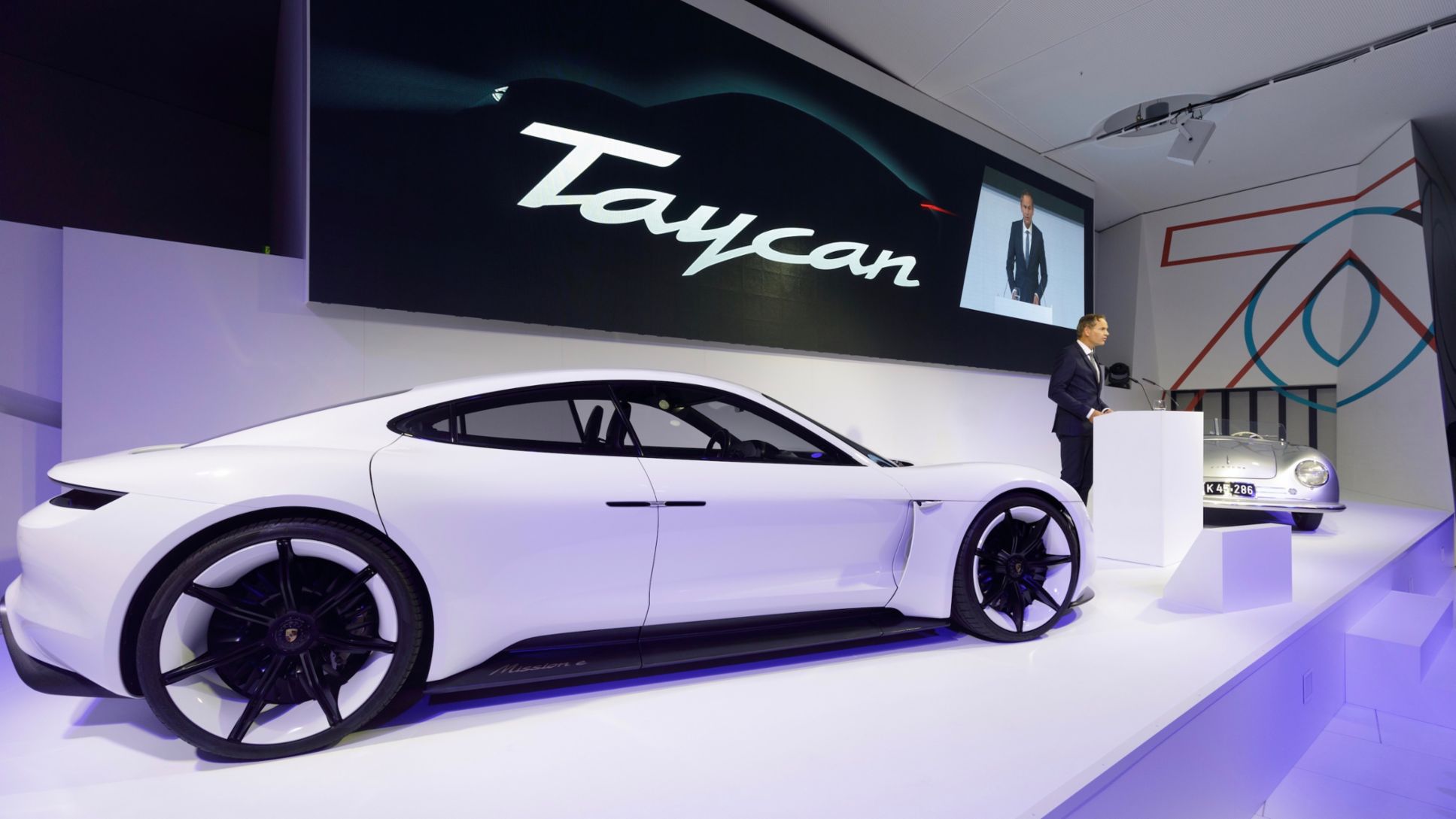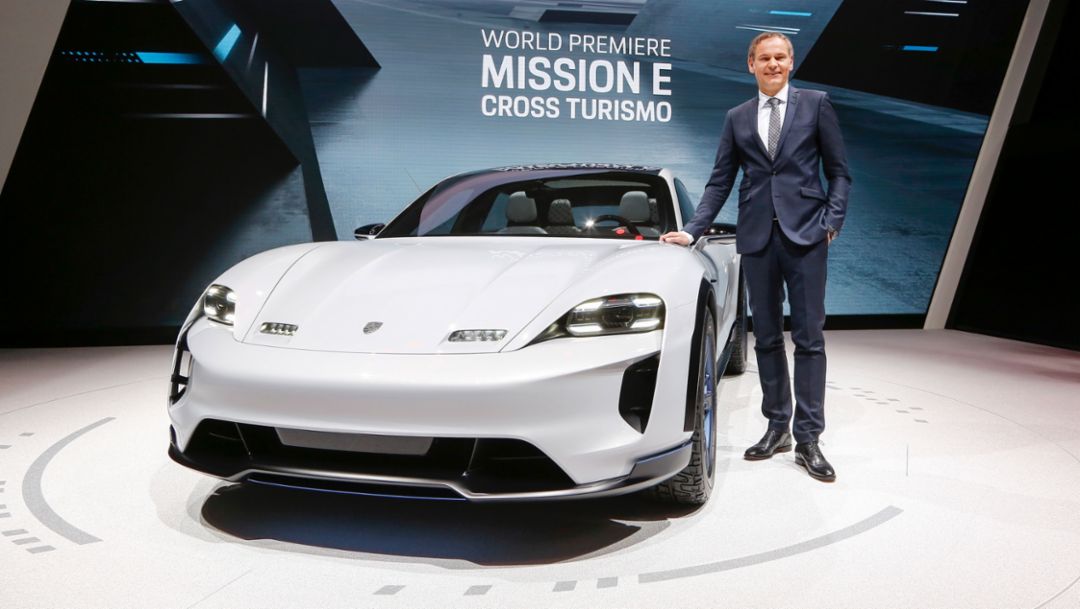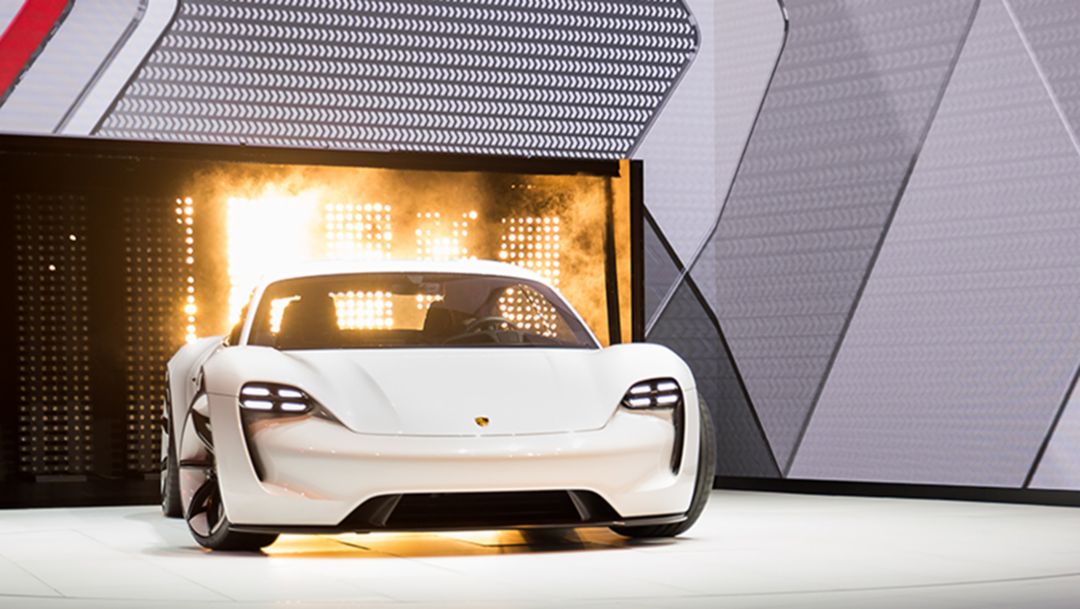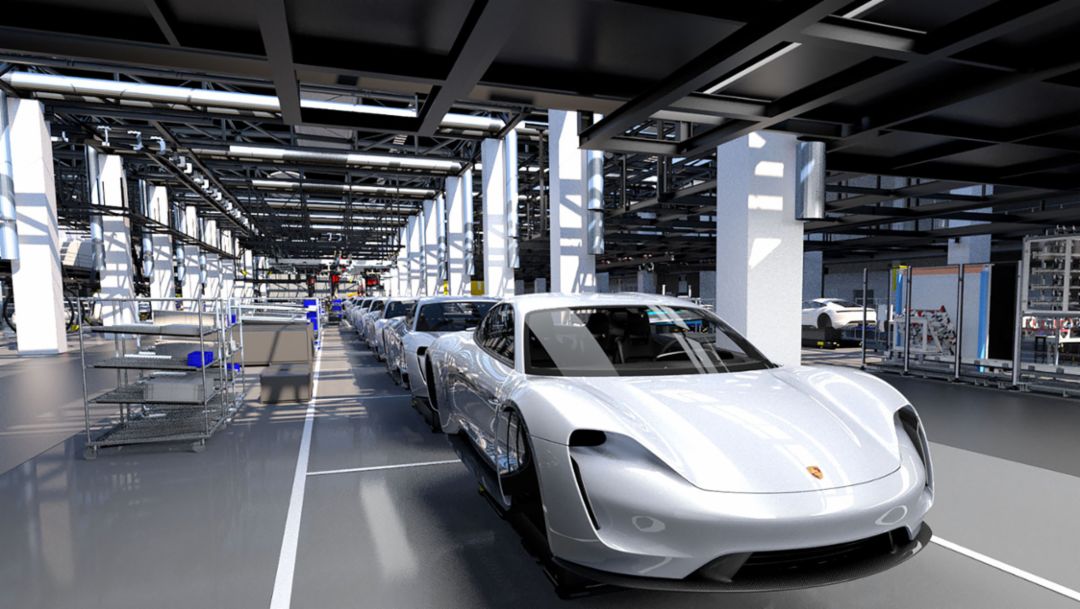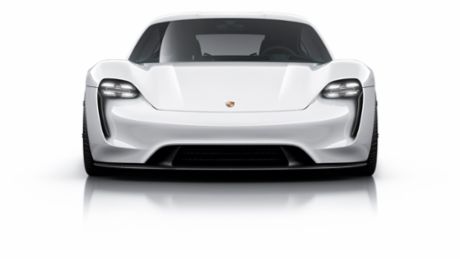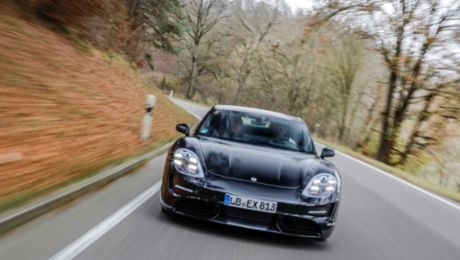Mr Blume, what do you have to say to those Porsche fans who believe electromobility is the wrong path?
Oliver Blume: Electromobility means a high level of efficiency and outstanding performance, making it a fantastic fit for Porsche. I would also make reference to our positive experience with plug-in hybrids: Porsche was the first manufacturer to offer these in three premium segments at the same time. We can see that with the Panamera, more than 60% of customers in Europe are already choosing a plug-in hybrid.
Does this high level of demand surprise you?
Blume: Not at all. We designed the plug-in hybrid variants as high-performance vehicles, and the Panamera is, in fact, the top model in the series. So our plug-in hybrids are anything but a compromise.
Was your decision to make Porsche an electric brand influenced by increasingly demanding CO2 limits and the Paris climate agreement?
Blume: The first thing I want to say is that Porsche is and will always be a sports car brand – with petrol engines and electric drive systems. And we are unconditionally committed to the Paris climate protection objectives. Ultimately, as car manufacturers it’s very clear that we have a responsibility to reduce CO2 emissions from transport; even though we have only a very small market share as a premium manufacturer, it is nonetheless out of the question for my colleagues on the Executive Board and myself to pass the buck – in fact, we rather perceive the prestige of our brand as giving us the means to set a positive example.
In that context, was any alternative decision ever possible, apart from electromobility?
Blume: As a manufacturer there are three options for offering vehicles that are locally CO2-free in usage: electromobility, hydrogen, and synthetic fuels. In the well-to-wheel consideration, which looks at the overall energy balance from fuel production to vehicle motion, e-mobility is three times more efficient than hydrogen, and six times more efficient than synthetic fuels; as the development of batteries advances, this advantage will expand even further. These are convincing arguments for a sports car manufacturer such as Porsche – even when considered in isolation from the excellent performance that can be achieved with an electric drive system.
The EU has further tightened CO2 limits for the period up to 2030, stipulating a reduction of 35%. Are you one of the people that believes this to be an over-ambitious goal?
Blume: My opinion is that these figures are extremely ambitious – but we must achieve them in order to meet climate goals. That much is certain. However, when it comes to political discussion, I would like to see stakeholders calling in greater expertise, and being mindful of the feasibility of the goals they set. As an exclusive manufacturer that is only active in a few premium segments, I’m certain that we will achieve the limits by 2030, and where possible we will even come in below them. Porsche will hit these ambitious goals. But in the volume segment, a great deal of work is needed to launch attractive and sustainable solutions that can win customers over to electromobility in the short time available.
Do strict CO2 limits such as these support the route to electromobility?
Blume: Absolutely. Electromobility is currently the only available option that is capable of bringing about a significant reduction in CO2 emissions from transport. And another thing we must be clear about: we will only achieve a positive effect for the climate and our environment if energy for the production and use of vehicles is derived from regenerative sources. At Porsche we switched our German production sites to green energy two years ago, and with the Taycan – which we will launch at the end of the year – we are going another step further, as production of our first e-athlete at the site is already carbon neutral; the second step is to also achieve carbon neutrality in the supply chain.
You’ve just driven the new Taycan in cold weather conditions in Arjeplog – is the car already living up to expectations: in other words, is this a true Porsche?
Blume: Definitely! My colleagues working on the chassis are very difficult to please, and it is their critical approach that has got Porsche to where it is today. Even they agree – they got out of the Taycan with their eyes lit up, and wearing broad smiles.
And did your eyes light up too?
Blume: So much! I’m incredibly excited about this vehicle. It is just fantastic to drive.
Can you see that the electromobility route you are taking presents something of a culture shock for many Porsche customers?
Blume: We are aware of that. But I can allay their concerns: the purely electrically driven Porsche contains everything that you would expect from our brand – extremely sporty driving dynamics, outstanding performance, and last but not least, a great deal of emotionality. I am firmly of the opinion that the more attractive the products on offer, the quicker electromobility will gain acceptance. Nonetheless, to continue being able to offer every customer what they want from our brand, we are focusing on three types of drive system for the future: further optimised petrol engines, advanced plug-in hybrids, and pure electromobility.
What has the initial feedback been like for the Taycan?
Blume: Extremely positive. We are overwhelmed by the demand, considering that customers have not yet seen the vehicle even once. It illustrates the high level of trust that our customers place in us.
In Norway, 3,000 advance orders for the Taycan have already been placed. Can you tell us about the global response in detail?
Blume: It is not yet possible to pre-order the Taycan; however, for €2,500, people can register their interest in buying one as part of a depositor programme – and around 20,000 customers have already done so worldwide. This is a significantly higher figure than we expected: we usually only see ordering peaks after the first driving reports are available, when the vehicle is presented, and when customers have been able to sit in the car in real life.
What does this high level of demand mean for delivery times? You had previously planned for just 20,000 units a year.
Blume: In light of the extraordinarily high level of demand, we will increase our production capacities. If there are waiting times, we might take the opportunity to gently introduce customers to the Taycan; so for example, we could make a Panamera plug-in hybrid temporarily available to customers before they receive a Taycan. But right now we’re awaiting the start of production before we talk about specific delivery times.
And you won’t be offering any preconfigured vehicles, even to shorten delivery times?
Blume: No, we won’t be selling any vehicles off-the-peg. Every customer will receive the exact vehicle that they want.
Tell me, what will the price range for the Taycan be?
Blume: We will offer the Taycan with two battery sizes, and will be starting with the larger package; the entry-level version with smaller battery will start at under €100,000. And just as with our combustion engines, there will also be many attractive extras for the Taycan.
Your goal is that 50% of all Porsche cars should have an electric drive system by 2025. Do you include plug-in hybrids in that calculation?
Blume: Yes, we do include the plug-in hybrids here.
Is it accurate to say that Porsche will only provide electric cars from 2030 onward?
Blume: We’ve never said that. As I’ve mentioned, for the future we are concentrating on a triad of drive systems, within which combustion engines will also continue to have their place, as we are continuing to refine them on an ongoing basis, making them even more efficient and environmentally friendly. And when it comes to our icon, we will be offering the 911 with a combustion engine for as long as it is legally permissible to do so; that said, the new eighth generation is already being developed to be hybrid-capable. And if one day we do offer it as a partly electric vehicle, then it will always be as an top-performance version.
Daimler has just announced that it will be releasing a plug-in hybrid with a range of almost 100 kilometres, in the second half of the year. When will you have one of those to offer?
Blume: The next generation of batteries will come in 2020, and will bring an increase in the ampere hours of our battery cells from 37 to 47. This will permit us to achieve larger ranges, which we will gradually introduce into our products.
Are you considering having your electric cars produced locally in China as well?
Blume: Although China is our largest individual market with around 80,000 deliveries per year, those volumes are relatively small in the context of setting up a separate production facility. So we have not so far been focused on producing cars locally in China, though it may be that we are forced to do so at some stage, because of customs regulations. We don’t want to jump the gun. And ultimately, our Chinese customers also value the fact that their Porsche comes from Germany. We’ll stick to doing it this way for as long as possible.
How many Porsche electric cars will there be by 2025, apart the Taycan and Macan? What else has been decided?
Blume: The Cross Turismo, the first derivative of the Taycan, will go into series production at the beginning of the next decade. And as you’ve said, the new generation of the Macan will be purely electric. No further decisions have yet been made beyond that. But you can safely assume that we already have many great ideas about how we will shape the mobility of the future – in ways that are sporty, sustainable, and distinctively Porsche.
Info
Text first published at “autogazette.de”
